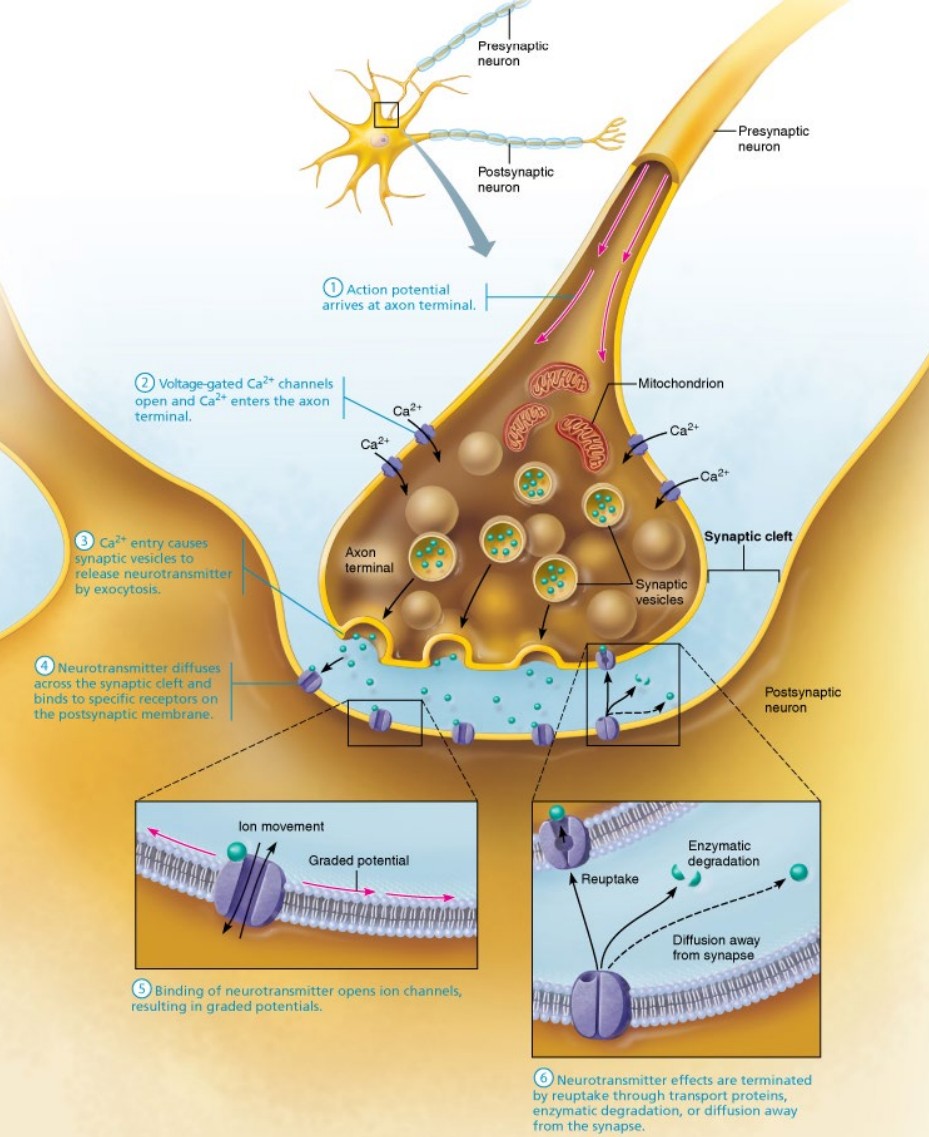Week 6: The Nervous System
1/8
There's no tags or description
Looks like no tags are added yet.
Name | Mastery | Learn | Test | Matching | Spaced |
|---|
No study sessions yet.
9 Terms
What are the 3 Basic Functions of the Nervous System?
Sensory - Sensory receptors detect changes in the environment.
Integration - Input is processed so that the system (brain) can decide on what to do.
Motor Output - Response initiated which then activates the body’s muscles and glands.
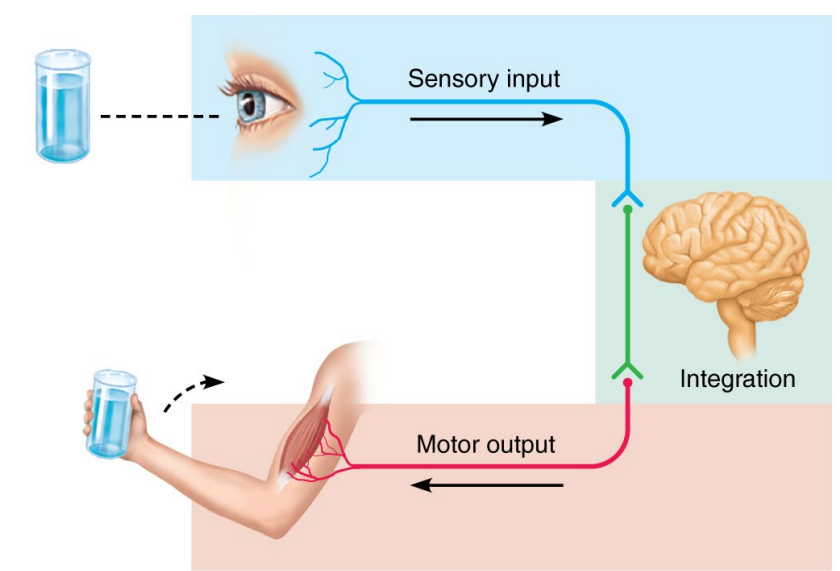
Name and describe the Divisions of the Nervous System:
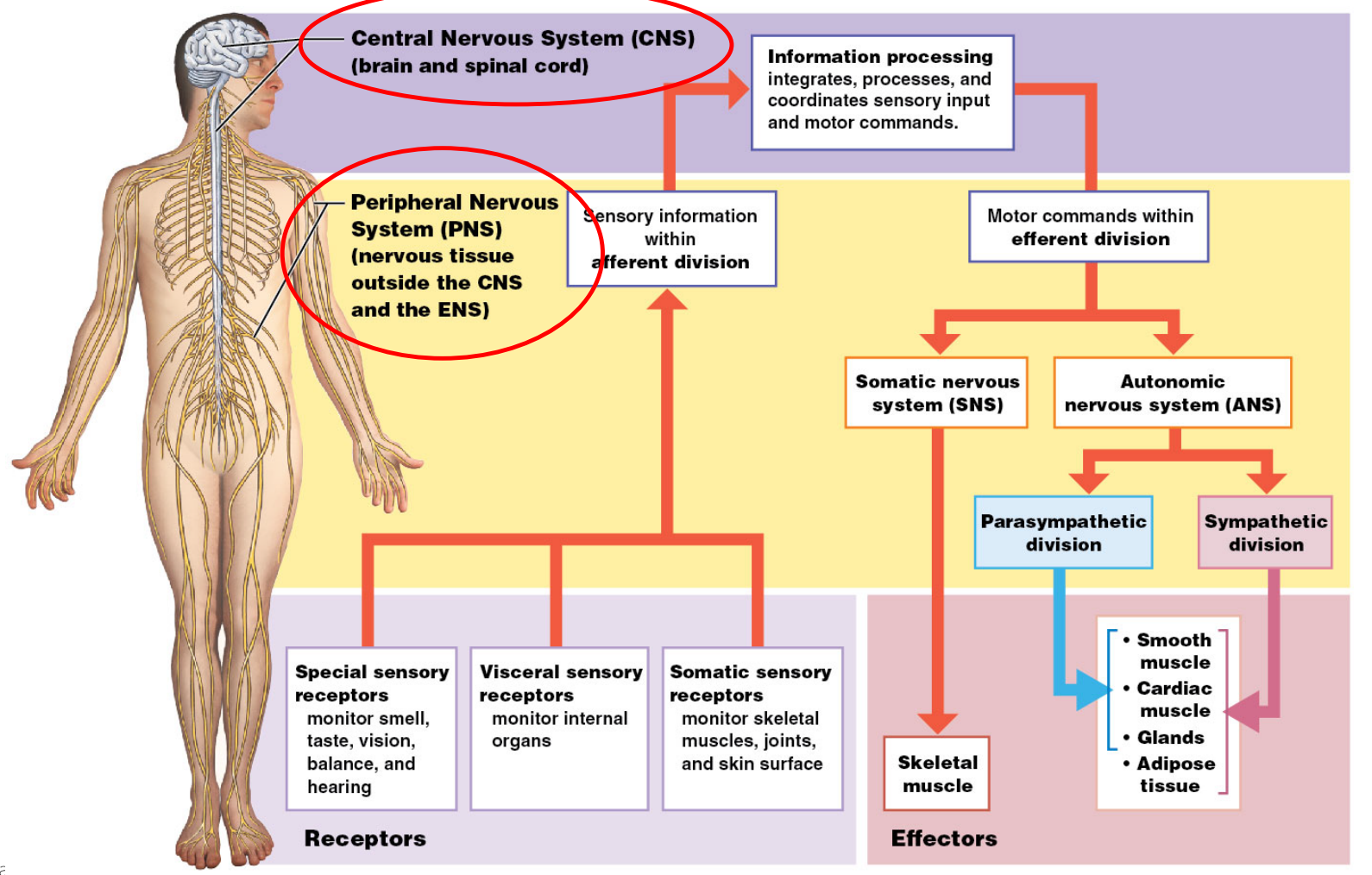
Name and describe what the Nervous System is made of?
Neurons
Communication
Processes information
Control functions
Neuroglia (Glial Cells)
Supporting cells
Name and describe the 6-Types of Neuroglia:
CNS
Astrocytes
Maintain blood-brain barrier.
Regulate nutrient and ion balance.
Provide structural support.
Repair damaged tissue (scar formation).
Ependymal Cells
Line brain ventricles and spinal cord central canal.
Produce and circulate cerebrospinal fluid (CSF).
Oligodendrocytes
Form myelin sheath around CNS axons.
Provide structural framework.
Microglia
Immune cells of the CNS.
Remove waste and pathogens (phagocytosis).
Activated during injury or disease.
PNS
Satellite Cells
Surround neuron cell bodies in PNS ganglia.
Regulate O2 and CO2, nutrient, and neurotransmitter levels around in ganglia.
Schwann Cells
Form myelin sheath around PNS axons.
Aid in axon regeneration.
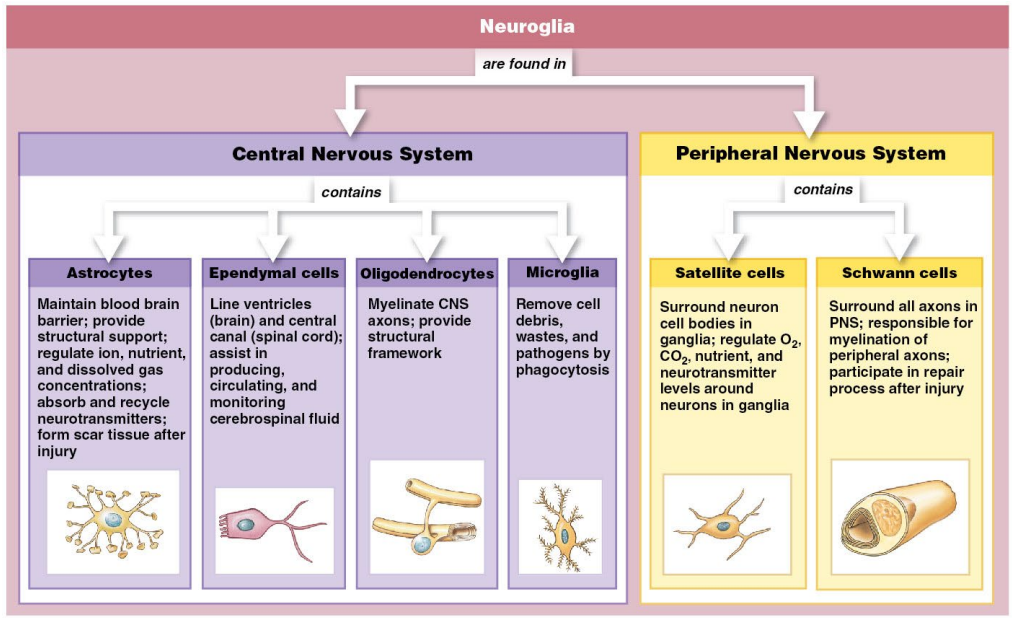
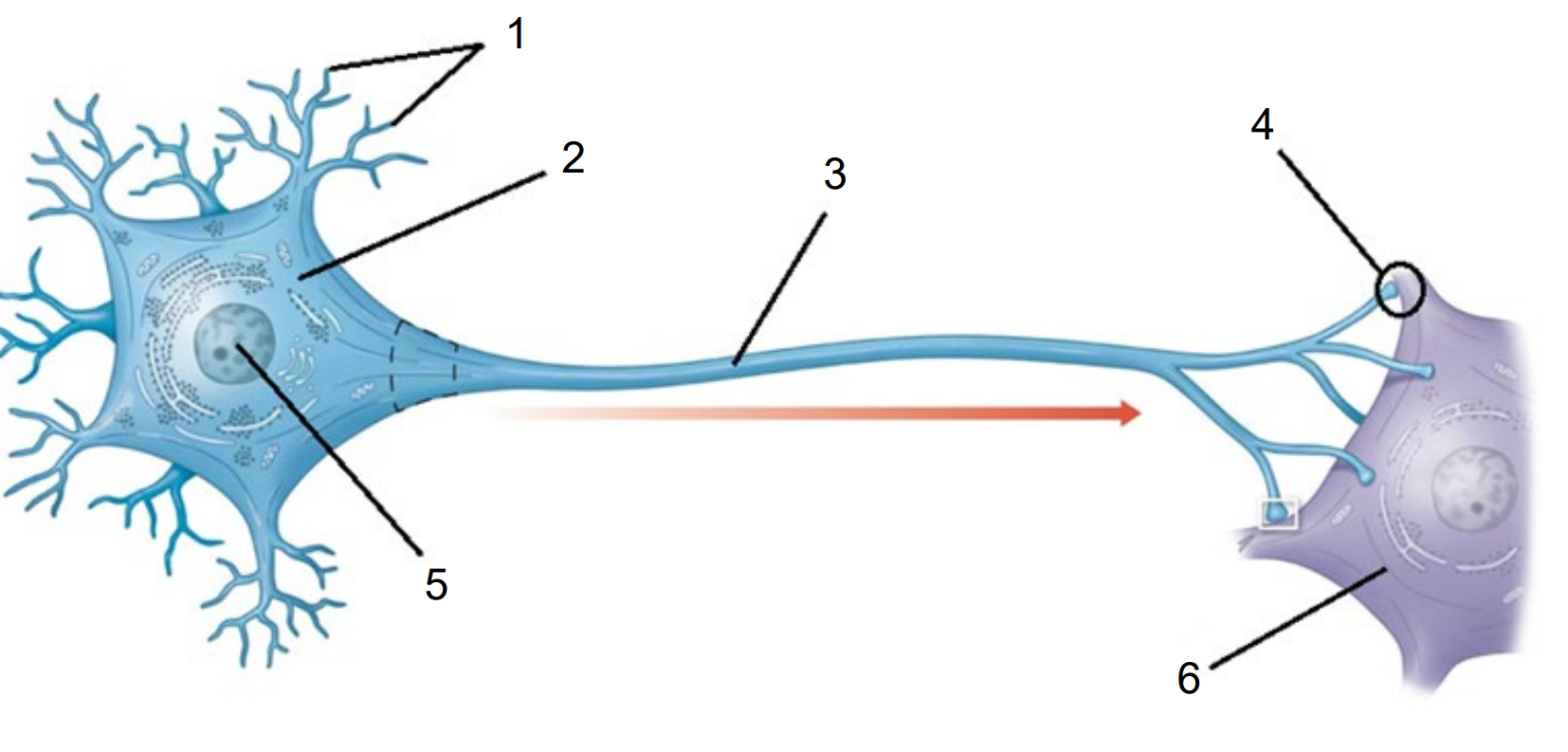
Name and describe the Structures of a Neuron:
Dendrites - Receives electrical signal from other neurons.
Soma (Cell Body) - Holds the Nucleus and supports cell function.
Nucleus - Holds DNA and controls function and repair.
Axon - Long fibre that transmits electrical signal.
Myelin Sheath - Insulates axon and speeds process. Made from Oligodendrocytes (CNS) and Schwann Cells (PNS).
Axon Terminal - Releases neurotransmitter to synapse.
Synapse - The gap between 2 neurons.
Post-Synaptic Cell - The neuron (muscle or gland) receives neurotransmitter. Has receptors to detect/respond to chemical message.
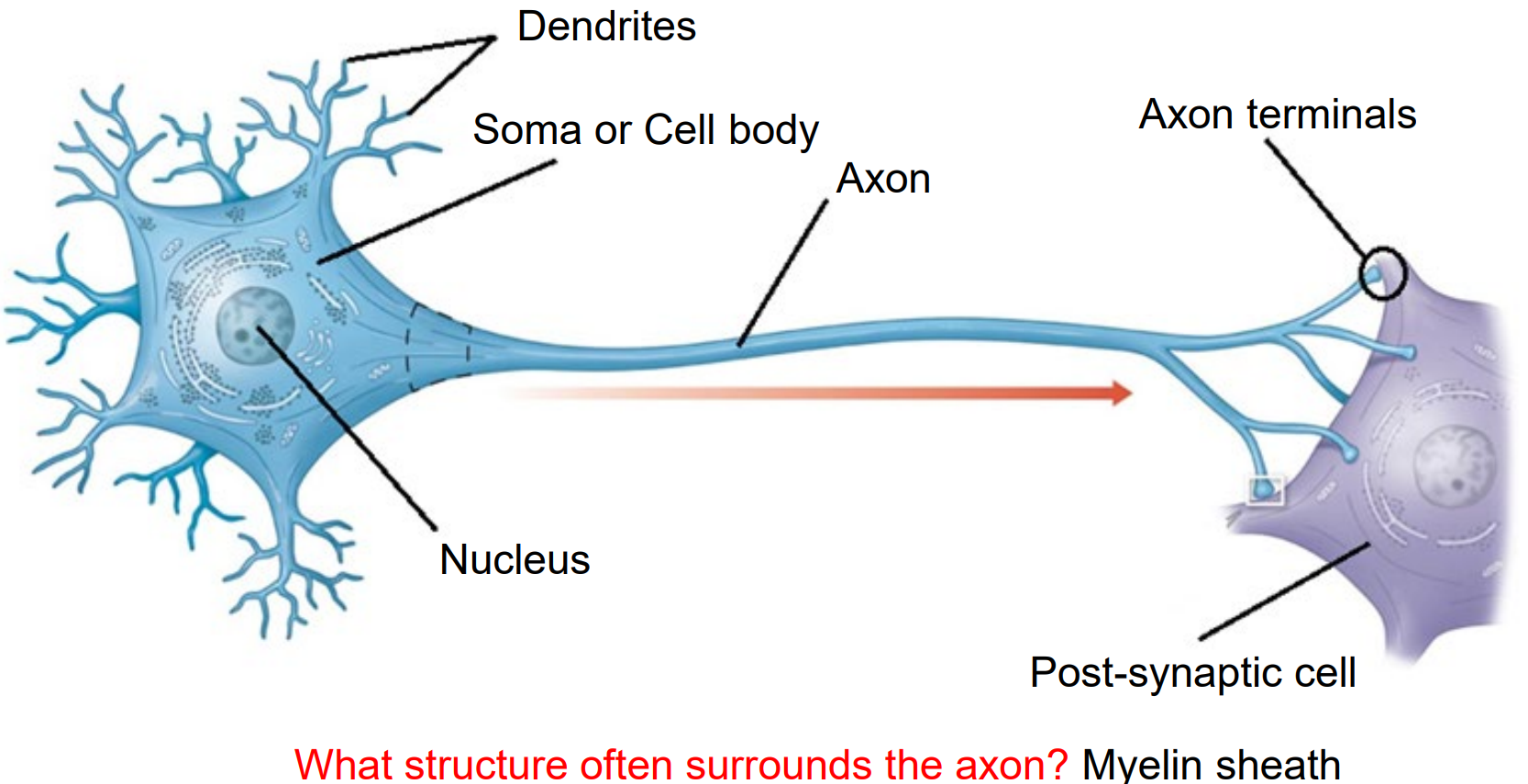
What is an Electrical Synapse?
Cytoplasmic continuity between two neurons (like a bridge). It’s called a Gap Junction (connexons).
Fast messaging
e.g., reflexes

What is a Chemical Synapse?
Instead of a Gap Junction it releases a chemical, ‘neurotransmitters’ into the Synaptic Cleft.
Neurotransmitters float across the Synaptic Cleft and enter a post-synaptic cell.
Slow/controlled
e.g., Neuromuscular Junction

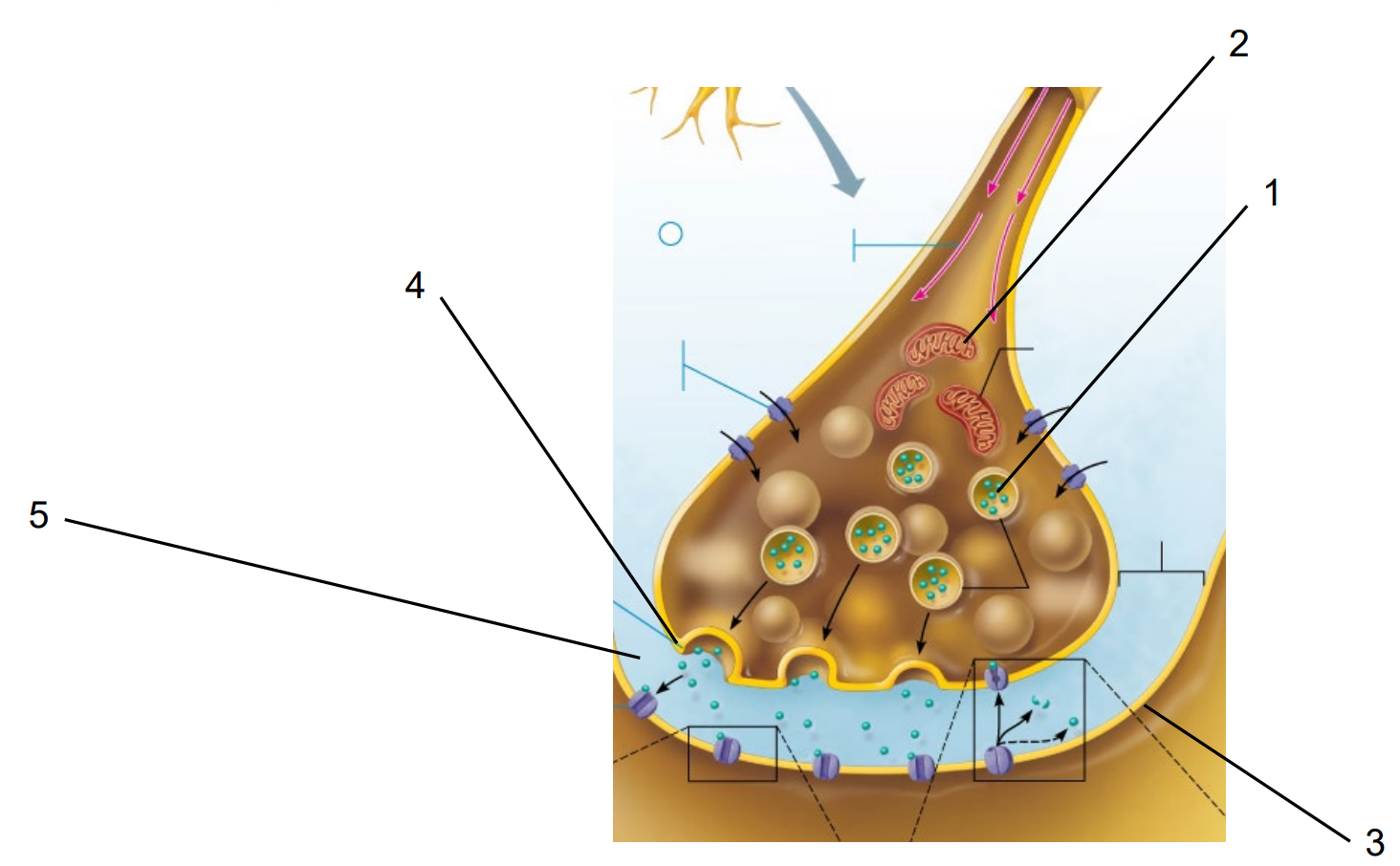
Name the structures of the Chemical Synapse:
Pre-Synaptic Vesicle
Mitochondria
Post-Synaptic Neuron
Pre-Synaptic Vesicle (Pre-Synaptic Membrane)
Synaptic Cleft
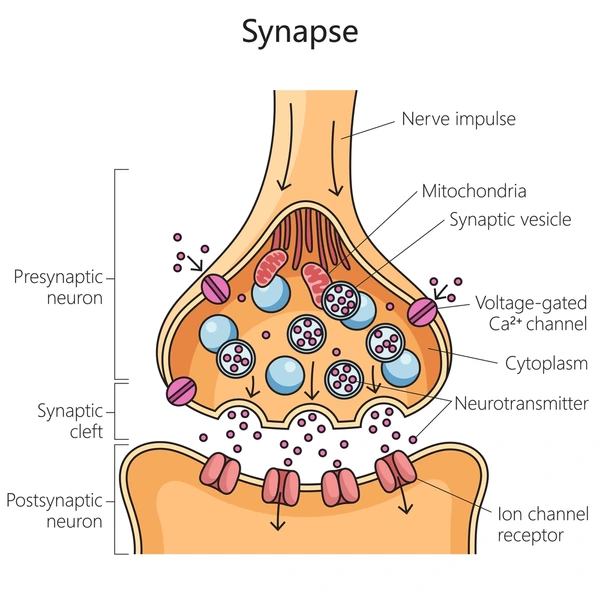
Describe the Process of a Chemical Synapse:
In the pre-synaptic cell, the electrical signal travels via the axon to the axon terminals.
Action potential
The voltage charged Ca2+ (calcium) channels open.
Ca2+ enters the channels and enter the axon terminal.
The Ca2+ enter pre-synaptic vesicles.
The vesicles hold neurotransmitters.
The vesicles fuse with the pre-synaptic membrane for exocytosis (exit).
The neurotransmitters travel through the synaptic cleft.
The neurotransmitters enter post-synaptic receptors and bind.
Ion channels open (graded potential).
